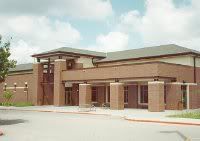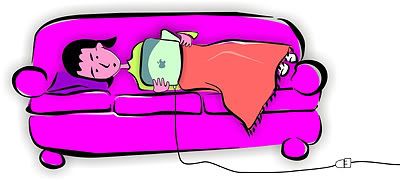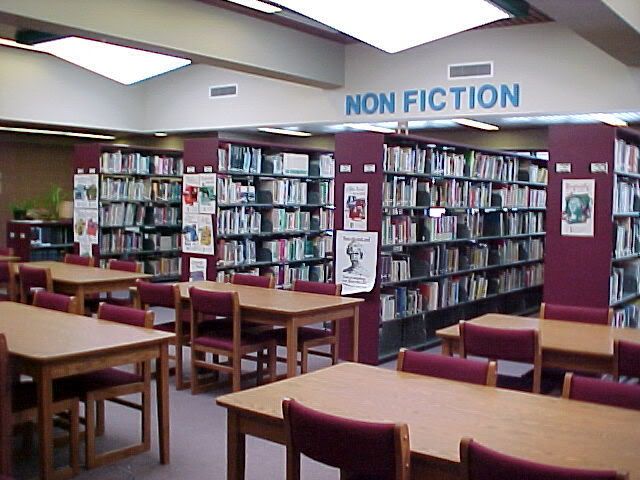The opening bass riff is catchy, upbeat, up tempo. Already, one is surrounded by sound. You catch bits of words here and there, but mostly it’s just the wash of sound. The track two count off is mechanical. The CDs name themselves in order. There are strings and something that might be a sitar. A huge orchestral crescendo, then sudden silence. Now lyrics, words taking the forefront. The voices are straight ahead, coming from the other side of the room. And now a rolling timpani effect from behind and moving right. There are dueling basses that move opposite, right to left and staggered voices that are indiscernible. Horns sound, mirrored by a bass guitar. Track three. A accelerating sound, like an airplane taking off, starts the track. Liberal use of echo and reverb are starting to be a trend and it’s obvious that the CDs are more and more out of synch. Track four starts with lyrics, sounding more conventional in its instrumentation. But then there is growing dissonance which coincides with the acoustic opening that plays on. There are different tempos competing, perhaps even different keys. Reeds can be heard to the left, maybe an oboe. And then bees. The sound of lots of bees. A huge buildup and then a fade back to the simplicity of the beginning. Track five has a pretty opening, a waterfall effect on a guitar broken by a sudden staccato burst from a snare drum. The drums from different speakers line up for two, three beats and are off again. Six consists of nothing more than a high pitched tone that blocks out anything else. Seven opens with a piano and builds steadily into a crescendo of percussion, but then backs down to leave a pair of trap sets. Eight is a narrative that loses itself in an overwhelming crush of barking dogs. And then…nothing.
Wednesday, March 5, 2008
The opening bass riff is catchy, upbeat, up tempo. Already, one is surrounded by sound. You catch bits of words here and there, but mostly it’s just the wash of sound. The track two count off is mechanical. The CDs name themselves in order. There are strings and something that might be a sitar. A huge orchestral crescendo, then sudden silence. Now lyrics, words taking the forefront. The voices are straight ahead, coming from the other side of the room. And now a rolling timpani effect from behind and moving right. There are dueling basses that move opposite, right to left and staggered voices that are indiscernible. Horns sound, mirrored by a bass guitar. Track three. A accelerating sound, like an airplane taking off, starts the track. Liberal use of echo and reverb are starting to be a trend and it’s obvious that the CDs are more and more out of synch. Track four starts with lyrics, sounding more conventional in its instrumentation. But then there is growing dissonance which coincides with the acoustic opening that plays on. There are different tempos competing, perhaps even different keys. Reeds can be heard to the left, maybe an oboe. And then bees. The sound of lots of bees. A huge buildup and then a fade back to the simplicity of the beginning. Track five has a pretty opening, a waterfall effect on a guitar broken by a sudden staccato burst from a snare drum. The drums from different speakers line up for two, three beats and are off again. Six consists of nothing more than a high pitched tone that blocks out anything else. Seven opens with a piano and builds steadily into a crescendo of percussion, but then backs down to leave a pair of trap sets. Eight is a narrative that loses itself in an overwhelming crush of barking dogs. And then…nothing.
Sunday, March 2, 2008
Observational Essay

Books are satisfying. For bibliophiles like myself, libraries represent endless possibilities. Gere Branch Library, located at 56th and Normal in Lincoln, Nebraska is one such library. The subtle yellow paint of the walls is calming and puts one in a studious and exploratory frame of mind. Invariably, I find myself quickly toting more books than I can reasonably hold and am soon sitting in the stacks riffling through a disparate assortment of leather-bound literature. Perhaps that’s one reason why I’ve always loved public libraries: just like late night YouTube wandering, subject leads on to subject with nearly infinite opportunities to follow a train of thought wherever it may lead.
It starts the second you walk through the doors. The smell of paper wraps itself around you, like a friend taking you by the hand. This contrasts sharply with the smell of any building in which printing takes place, where the smell is of hot paper, paper being made to work. But in a library, it’s as if the books are content to wait for you to find them instead of imposing themselves harshly on your senses. As of late, the public has been less inclined to present themselves bodily for their literary experiences. Technology has made the finding of sources and the exploration of books a simpler task, one that can be accomplished in pajamas, in the safe haven of one’s bedroom. Still, the library is still a place that hums with human activity. Just sitting still and listening presents one with a multitude of sounds. Hands shuffle papers. Muted discussions of facts. The metallic screech of book ends being snugged. Squeaking wheels on book carts. Children crying. Librarians directing patrons to resources. A man behind me complains loudly to his wife in a Southern accent, “I can’t believe they woke me up! I was just resting my eyes.”
experiences. Technology has made the finding of sources and the exploration of books a simpler task, one that can be accomplished in pajamas, in the safe haven of one’s bedroom. Still, the library is still a place that hums with human activity. Just sitting still and listening presents one with a multitude of sounds. Hands shuffle papers. Muted discussions of facts. The metallic screech of book ends being snugged. Squeaking wheels on book carts. Children crying. Librarians directing patrons to resources. A man behind me complains loudly to his wife in a Southern accent, “I can’t believe they woke me up! I was just resting my eyes.”
Not only does the library present a veritable symphony of sounds, but one can also witness case studies of sociology. People visit a library for any number of reasons. Some do research, some read the paper, some just need a place to warm up for a while. Public libraries are so much more hospitable than academic libraries. Aside from the generally more pleasing aesthetics, people are welcome to come into the library for just about any reason. On a college campus one is often confronted with glowering librarians and unenthusiastic student employees. The almost exclusively artificial light tires your eyes. Row upon row of unnecessarily boring books presents a daunting collection to decipher. At a public library, you’re much freer to read up on what interests you, instead of feeling like you’re wasting time if the secondary sources you dare to consult don’t pertain directly to Shakespeare’s 37th sonnet. Not only that, but I’ve always found the Dewey Decimal system to be far less confusing than the numerical jumble that is the Library of Congress system. Once you get past the initial feeling of the library, there’s the literal feeling of the library. I always find the air to be either heated or cooled just beyond the needs of human comfort. During the winter, I strip my coat off as soon as I enter because the climate inside is the exact opposite of the arctic elements outside. On the other hand, during the summer I find myself toting a sweater to keep myself from losing feeling in my extremities thanks to the enthusiastic air conditioning system. Book paper runs an interesting gamut of touch: some are rough and thick, as if made to withstand handling, while others are brittle and nearly translucent. The green and blue patterned carpet cushions and quiets your step.
 I love walking around a library and familiarizing myself with the location of everything. It’s like strolling through a party and seeing old friends again. I particularly enjoy the oversized books. They’re satisfyingly heavy and unwieldy and invariably contain interesting things like art and auto maintenance. Then there’s adult nonfiction. Numerically ordered, this section contains an endless amount of information. There are manuals about software and other aspects of technology in the 004s, right at shoulder-height. Identity and personality in the 137 range. Social work can be found around 361, near one’s knees. If one were to stumble quite specifically upon 613.96, they would find books on the Kama Sutra and just a bit farther on at 741.5, you can pick up some collections of original X-Men comics, conveniently shelved so you can sit on the floor and still have them just a reach away.
I love walking around a library and familiarizing myself with the location of everything. It’s like strolling through a party and seeing old friends again. I particularly enjoy the oversized books. They’re satisfyingly heavy and unwieldy and invariably contain interesting things like art and auto maintenance. Then there’s adult nonfiction. Numerically ordered, this section contains an endless amount of information. There are manuals about software and other aspects of technology in the 004s, right at shoulder-height. Identity and personality in the 137 range. Social work can be found around 361, near one’s knees. If one were to stumble quite specifically upon 613.96, they would find books on the Kama Sutra and just a bit farther on at 741.5, you can pick up some collections of original X-Men comics, conveniently shelved so you can sit on the floor and still have them just a reach away.
Moving on, there’s adult fiction which, of course, encompasses a huge body of work. It would take ages to even begin trying to read through it. Once you become familiar with a particular library, it only takes a moment to find your favorite Crichton novel or a nice copy of Jane Eyre. Of course, you might be more interested in genres like mystery, westerns or science fiction. My favorite part of the mystery section is the deliciously menacing skull sticker that goes on the spine to warn you that you’re not just picking up another romance novel. In the Lincoln City Libraries system, this sticker is white on red as if to emphasize that there will inevitably be blood spilled in this book. From here, lying between you and youth nonfiction is the reference section. You can either adore reference books or find them insufferably tedious. I can’t imagine one person in the world who wouldn’t be excited to see that huge dictionary lying open on its revolving dais. Talk about depths of knowledge. The gilt-edged pages of an enormous old dictionary and the feel of those pages take me back to my childhood when I used to read the dictionary for fun. The good old days, indeed.
red as if to emphasize that there will inevitably be blood spilled in this book. From here, lying between you and youth nonfiction is the reference section. You can either adore reference books or find them insufferably tedious. I can’t imagine one person in the world who wouldn’t be excited to see that huge dictionary lying open on its revolving dais. Talk about depths of knowledge. The gilt-edged pages of an enormous old dictionary and the feel of those pages take me back to my childhood when I used to read the dictionary for fun. The good old days, indeed.
Just across the way is the enticing youth nonfiction section, which presents nearly as many possibilities for edification as adult nonfiction, but in a much more truncated style. Really, though, everyone enjoyed brevity in their research materials. Especially when that someone is 10 years old and doesn’t really care about Antonio’s potential homosexuality in The Merchant of Venice, but wants rather to know only that Shakespeare was born on April 23rd, 1564 and wrote a lot of plays. Sometimes the bare facts are all you really need. One of the most interesting areas of youth nonfiction, in my opinion, is the books of Braille, awkwardly shelved due to size and lack of cover. If you thought Harry Potter and the Order of the Phoenix was thick, you should look at the Braille translation.
Alongside these are youth paperbacks (which always seems to be in wild disarray, no matter the efforts of the library staff to organize them) and youth fiction. Of any of these sections, youth fiction is the area that I think most people from my generation can identify with. Judy Blume, Beverly Cleary, Philip Pullman and Donald Sobol were close friends for a long time and I still go back and say hi to them every once in a while. Didn’t everyone love Encyclopedia Brown and how he cracked those incredible cases? Finally in the youth area, there are picture books, a collection I still love to wade into. In no other book do you get a good solid moral lesson coupled with excellent illustration. Not to mention that the picture book section always seems to have the most comfortable furniture. At Gere especially, there is a cozy little reading nook with a high arched ceiling and a window seat that looks out on the waving sea of native grasses in the summer. Someday I hope to have a space like this in my own house.
From the time I was little, libraries were a place where I felt happy and safe. I grew up thinking that everyone must love libraries as much as I did. Since then, I've learned that this simply isn't the case. Some people just don't like books, but I think that everyone could learn to at least appreciate everything that a library has to offer. Everyone is bound to be able to find something of interest in the collection, whether it be CDs or Nostradamus, there's a little something for everyone to be found at a public library.
simply isn't the case. Some people just don't like books, but I think that everyone could learn to at least appreciate everything that a library has to offer. Everyone is bound to be able to find something of interest in the collection, whether it be CDs or Nostradamus, there's a little something for everyone to be found at a public library.